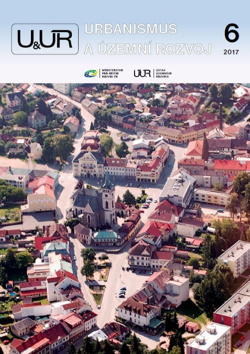
Services in the rural surroundings of the towns of Chrudim and Hlinsko: a quantitative evaluation of change during the transformation period, by Martina Borovičková
This article deals with the development of public services accessible to inhabitants of rural areas in the District of Chrudim during the transformation period since the beginning of the 1990s. The subject of the evaluation is quantitative difference in selected services in six categories (education, healthcare, culture, sports and tourism, social services and retail trade) in the District of Chrudim between 1991 and 2017. The development of parameters of services has been analysed from the viewpoint of absolute numbers of facilities accessible in the whole territory under observation, followed by the figures in seven specific administration wards governed by authorized municipal offices. The assessment is based on field research and enhanced by interviews with mayors and native inhabitants. A part of the article is devoted to the development of local socio-demographic characteristics in the region since 1991. The results of the research have confirmed a certain increase in the total number of services but, at the same time, significant losses in particular sectors such as culture and retail shopping.
Settlement structures in selected policies and spatial development strategies in countries neighbouring the Czech Republic, by Karel Maier
In their policies and strategic documents, all countries bordering on the Czech Republic have applied settlement structure control, at least for the highest hierarchic levels of centres, and delimited the development axes connecting these centres. Settlement centres are regarded as a functional component of (metropolitan or urban) demarcated regions. For these functional regions, some neighbouring countries create special planning tools that go beyond the borders of administrative units in order to coordinate developments in the territories demarcated. Also, all these documents deal with broader relations and cross-border contexts. The approach to planning, or in other words, regulation of the use of settlement systems demarcated, is varied. Highly detailed standards for specific hierarchic levels of centres can be found in German and Austrian documents, which contain standards of facilities for settlement centres at all levels and give detailed wording of development principles for centres and agglomerations. Moreover, German documents define cooperational centres even for territories whose centres do not have sufficient potential to serve their own catchment areas. Development axes with increased requirements for spatial change and significant developments expected are differentiated from those where line infrastructure connects centres but the intensity of changes is not affected nor foreseen to be.
Prospects for Czech high speed railways, by Milan Körner
The transportation infrastructure of superior networks is an important chapter in the history of national and regional planning documents. While the construction of motorway and road networks has long been part of regional plans (in the Czech Republic, the pertinent plan is Principles of Spatial Development), because of the implication of territorial claims, the railway network has so far been a very different story. The reason for this is that most modernization/optimization construction work was carried out on railway land, so seldom requiring new areas. In fact, very few constructions were genuinely new. In consequence, routes have been altered rarely, so speed parameters, capacity (additional tracks) and the state of road crossings have scarcely been subject to improvement. High speed railways, on the other hand, have been subject to a completely different approach. Current studies deal for the most part with new constructions, amounting up to 1,225 km of new railways. Including tracks under construction, Germany has approximately 1,470 km of new railways for a velocity of over 250 km/h, of which 550 km are for over 300 km/h. Another section of the high speed railway network comprises 1,570 km of reconstructions for 200–230 km/h. The length of Czech high speed lines under consideration is almost identical with this, although the population of Germany is eight times higher and there are eighty German cities with a population over 100,000 as opposed to six of such size in the Czech Republic. A current study suggests 730 km of railways with 400 km of new constructions (150 km/h) and 330 km of reconstructions (200 km/h). The article also discusses links to the settlement structure and presents several comparisons with Bavaria and Austria.
Spatial studies in the context of spatial planning management, or how to avoid writing studies in vain, by Vít Zeman & Lenka Tomášová
One task facing architects and politicians these days is more complex than a search for ways to preserve beautiful public areas: it is a search for ways to save society in its current form. Public zones are litmus tests only; we might think of them as blood tests of a patient named Society of Culture. The identification of elementary problems and the implementation of certain principles in creating the appearance of squares, streets and other public spaces would serve to inject an active ingredient that may start the recovery of a diseased society.
Slovak Smart City Cluster and social innovations, by Milan Husár, Maroš Finka and Vladimír Ondrejička
Smart cities as a concept for urban development is increasingly more promoted in academia as well as political sphere of contemporary cities. The concept is, though, often not critically perceived and is presented as a cure for all urban ills of these days. The paper is focused on smart cities as the cities of future and strives to provide a view of smart city as a connection of modern technologies and social innovations. The Slovak Smart City Cluster is presented together with one pilot project – AMEM grid – autonomous mobility and energy micro-regional network for Tatra region with the city of Poprad. The contribution aims at providing an alternative view on smart cities and put the human and quality of life into the spotlight of urban development.